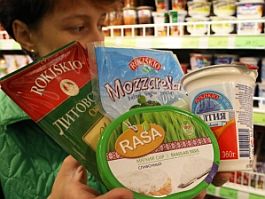Analytics, Baltic Export, Baltic States – CIS, Industry, Lithuania, Markets and Companies
International Internet Magazine. Baltic States news & analytics
Saturday, 27.04.2024, 06:09
Main driving forces of the manufacturing industry in Lithuania are production and export of foodstuff
 Print version
Print version |
|---|
Therefore, results of the manufacturing industry are highly sensitive to fluctuations in this area.
Year-on-year in January-February 2014, excluding refined petroleum products, the manufacturing industry grew by 11.1%. The main driving forces of the manufacturing industry this year are the rapidly growing production and export of food products, furniture, and rubber and plastics related industries.
It should also be noted that the manufacturing industry was affected by Lithuania's chemical industry due to high comparative basis with early 2013. Lithuanian fertilizer producers faced problems because of the conflict between Russian and Belarusian fertilizer manufacture giants, the consequences are still reflected in the statistics.
According to DNB Bank's Chief Analyst Indre Genyte-Pikciene, even though surveys of industrial companies demonstrated improving expectations related to production output and export flows, nonetheless, tensions in Ukraine made Lithuanian companies rethink their strategies. The manufacturing industry is one of the activities focusing on external markets, it exports as much as two thirds of production. In recent years this was the force which pushed Lithuanian economy on the path of sustainable development.
"However, now, our exporters once again have to seriously rethink the structure of export markets and destinations of business development. Those conducting business with Eastern markets are especially concerned as the risks have increased not in% but in times," stressed the analyst.
Russia which lured Lithuanian exporters with attractive return, large market and ever increasing demand for Lithuanian goods is becoming more and more risky. Even putting aside the deadlock conflict between the East and the West, Russia's economy is facing serious structural problems.
Pikciene says that certain segments of Lithuania's industry (for example, the food industry) encounter risks which are difficult to manage and are forced to consider auxiliary plans if the situation deteriorates further. Still, the Russian market has limited influence on general results of Lithuania's manufacturing industry. Export of Lithuanian products (excluding minerals) into the Russian market is not so high after all: in 2013 it accounted for 7.1% of all goods of Lithuanian origin.








 «The Baltic Course» Is Sold and Stays in Business!
«The Baltic Course» Is Sold and Stays in Business!

